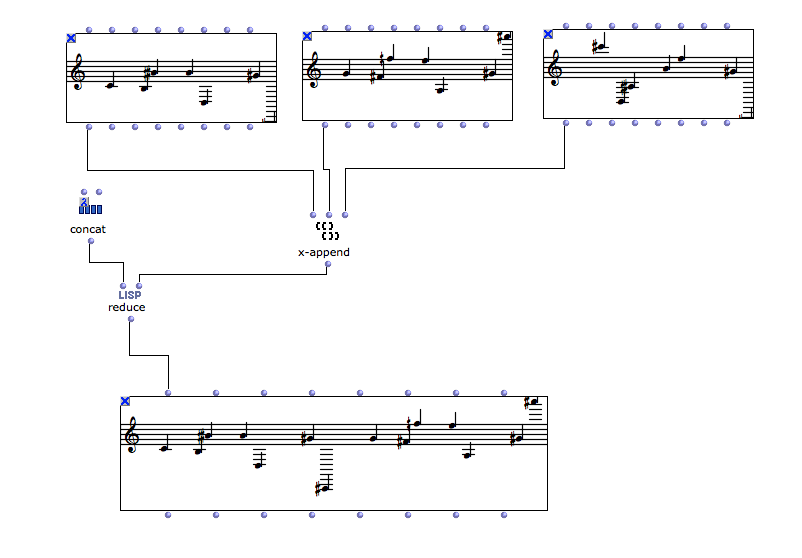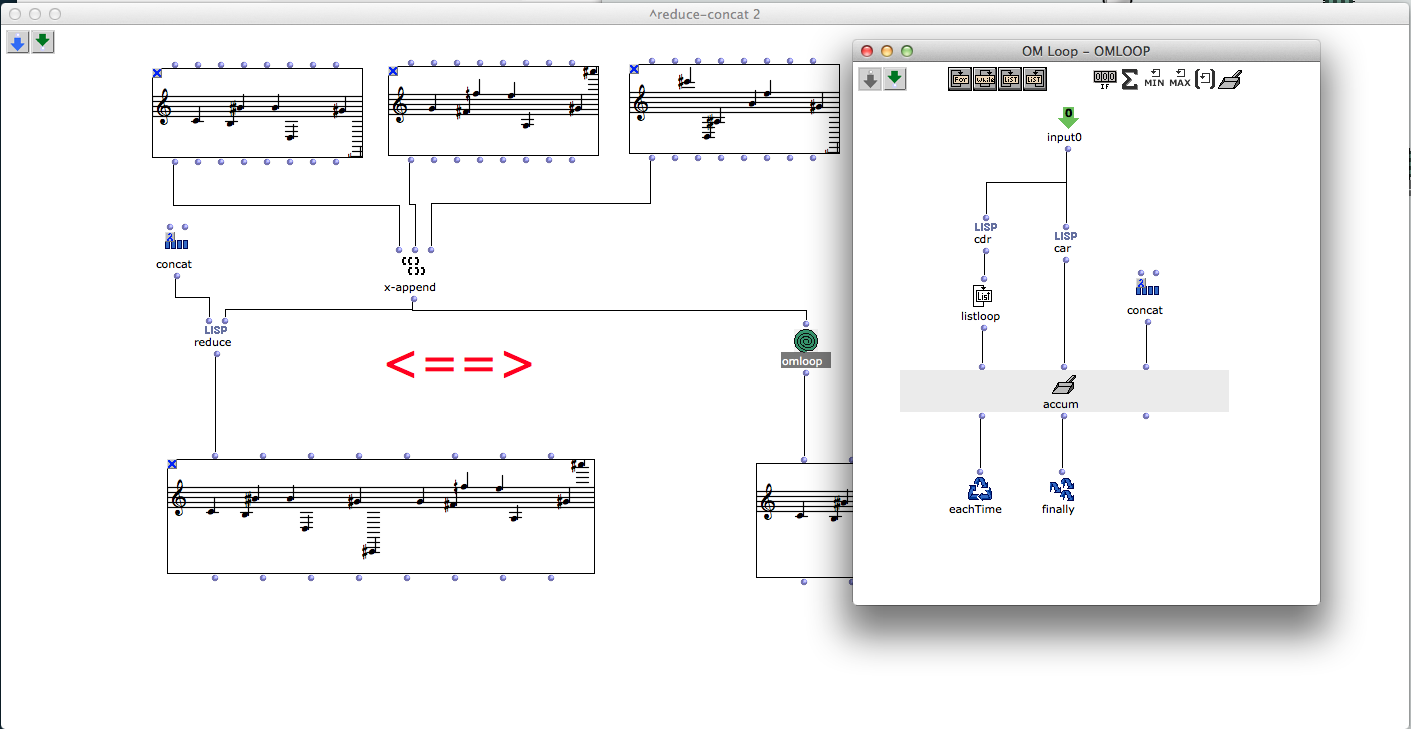Hello:
I have a loop process that generate a list of chord-seq objects. I want to realise that list in a multi-seq object.
Here’s the output of my loop process…it looks to me like a list of chord-seq:
OM => ((#<chord-seq 23C73463>) (#<chord-seq 23C73463>) (#<chord-seq 23C73463>) (#<chord-seq 23C729C3>) (#<chord-seq 23C7416B>) (#<chord-seq 23C73463>) (#<chord-seq 23C729C3>) (#<chord-seq 23C73463>) (#<chord-seq 23C73463>) (#<chord-seq 23C729C3>) (#<chord-seq 23C73463>) (#<chord-seq 23C73463>) (#<chord-seq 23C729C3>) (#<chord-seq 23C7416B>) (#<chord-seq 23C73463>))
But when I use it as input to multi-seq, I get the following error:
OM > multi-seq must be initialized with a chord-seq list!
OM => #<multi-seq 242647A3>
Thanks for any help.
andrew



